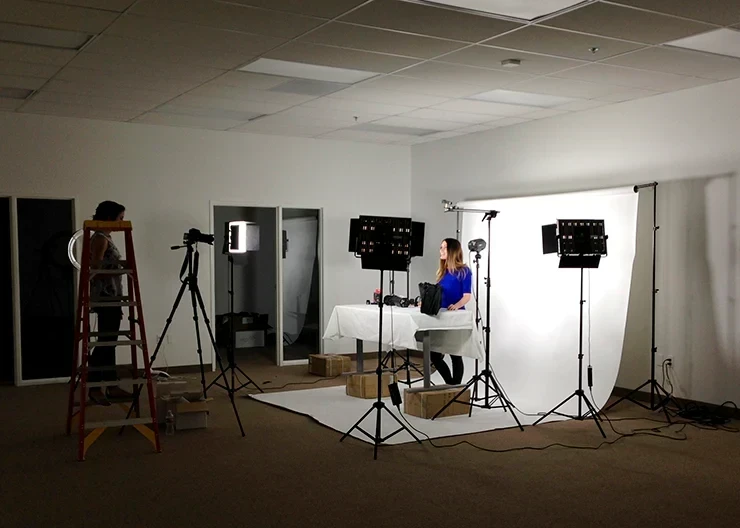Illuminating your photo studio effectively can seem like a daunting task, especially with so many options on the market. It’s imperative to choose the right lighting system that matches your style, budget, and studio size. In this article, we will explore and compare three types of studio lights: continuous lights, speedlights, and monolights.
Continuous Lights
Continuous lighting, also known as ‘hot lights’ or ‘constant lighting,’ emits light as long as it is switched on, much like a traditional light bulb. This type of lighting allows you to see how the light falls on your subject in real-time.
Pros: Continuous lighting is often more affordable and easy to use, making it a good choice for beginners. It’s excellent for video work and doesn’t require a camera with a flash sync feature.
Cons: These lights generate heat, which can make long shoots uncomfortable. They are also less bright than other types of studio lights, meaning you may need more of them to achieve the same effect.
Speedlights
Speedlights, or camera flashes, are small, portable devices that emit a short burst of light when triggered.
Pros: Speedlights are lightweight and easy to move around, making them ideal for on-location shoots. They are compatible with most cameras and offer a high level of control over the power of the light.
Cons: While versatile, speedlights may not provide enough light output for larger studio settings or for lighting large subjects or groups. They also rely on batteries, which can run out during a shoot.
Monolights
Monolights are self-contained studio strobes with a flash head and power supply all in one unit.
Pros: Monolights offer a high level of control over light intensity and direction. They are powerful enough to light large areas and can be used with various light modifiers like softboxes and umbrellas.
Cons: Monolights can be more expensive than other types of studio lights. They are also bulkier, which may make them less suitable for on-location shoots.
The Verdict
The best studio lights for you depend on various factors, including your budget, the type of photography you do, the size of your studio, and your level of experience. Beginners might start with continuous lights for their affordability and ease of use. Speedlights are a good choice for photographers who travel for their shoots, while monolights offer the most power and control for professional studio photographers.
Investing in good lighting equipment can transform your photographs, so take your time to research, try out different options, and make an informed decision. Remember, good lighting is not just about the equipment; it’s also about how you use it. Happy shooting!


0 Comment